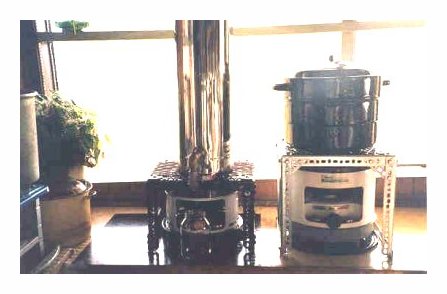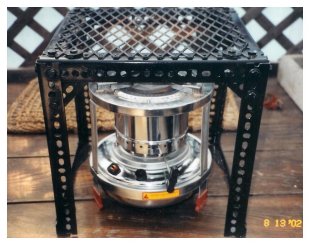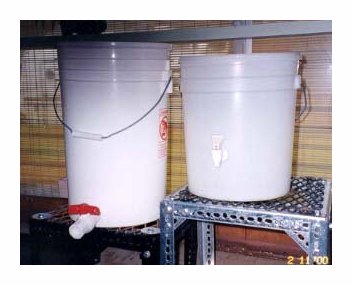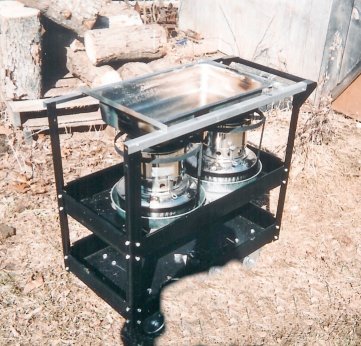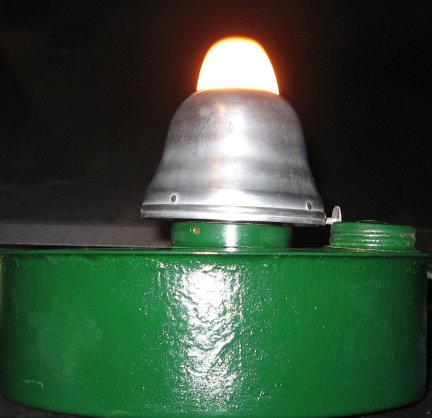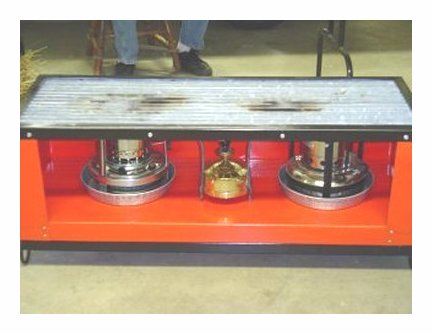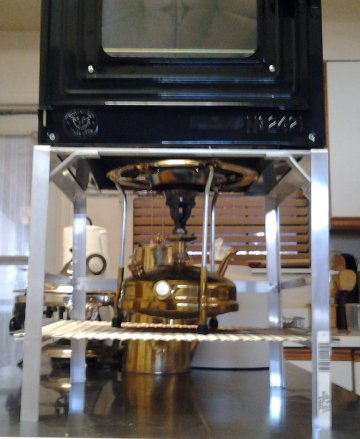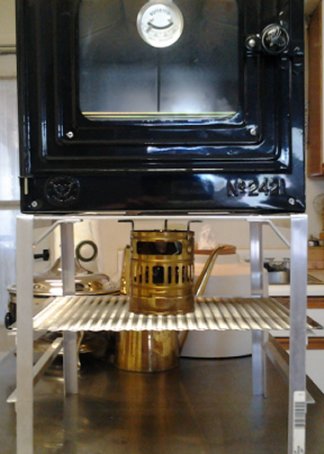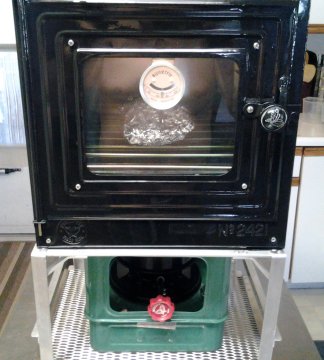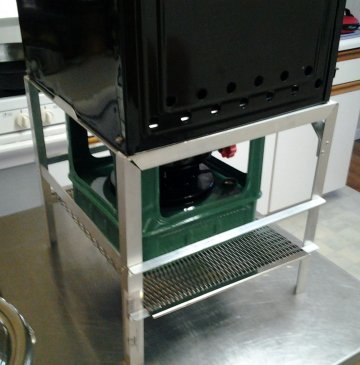Many kerosene cookers do not have a sufficiently large area to support a
pan with a large surface area, nor are they strong enough to reliably
support significant weight. These cookers supply enough heat to easily
boil 5 gallons of water, so a simple stand wide and strong enough to
support at least 75 pounds adds greatly to their utility. Then they may
be used for canning and large scale cooking needs.
The easiest way to build a strong stand is to use 1 1/2" wide galvanized
"L" angle steel with pre drilled holes, which are available at most
hardware stores. For the top surface, a piece of heavy gauge "expanded"
steel works perfectly, supporting the weight of heavy pots, yet letting
the heat from the cooker flow upward unimpeded.
A small Butterfly stove can fit under a 12" square and 10" high stand,
while the larger Alpaca and Butterfly stoves requires a minimum 14"
square, 14" high stand. For the small size, then, one 4 foot and one 5
foot "L" piece is needed, and bracing the legs requires a 3 foot piece
of 1 1/2" flat strapping.
The pieces of angle steel are cut with a hack saw, the cut edges
smoothed with a mill file, then bolted together with 3/4" long, 5/16"
bolts using lock washers. The expanded metal is fastened to the top
using the same bolts with fender washers. Once assembled and square, the
flat steel strap is held against the upper corners to form a short
triangle, the holes lined up, the angle cuts marked with a pencil, then
cut with a hack saw and bolted into place. Look at the photos of the
stands: you should be able to copy the design from that alone.
I use a short 2" section of 1 1/2" steel "L" angle
bolted to the bottom of each leg. These provide a secure "foot"
that will not scratch a table and distribute the weight of a large load
over a wider area so that indentation marks are not left on a surface.
Use your imagination! A cooking stand can often be made from
materials at hand or salvaged steel
"L" angle such as a discarded bed frame.
The cost of the cooking stand depends upon what you use to build one.
The illustrations below are cooking stands I built from 1 1/2"
strapping, and it cost about $30.00. The added versatility and lack of
wear on the cooker more than make up the cost in the long run, as then
both the stand and the cooker should last a lifetime. In an emergency,
the stand may also be used over coals from a campfire!


